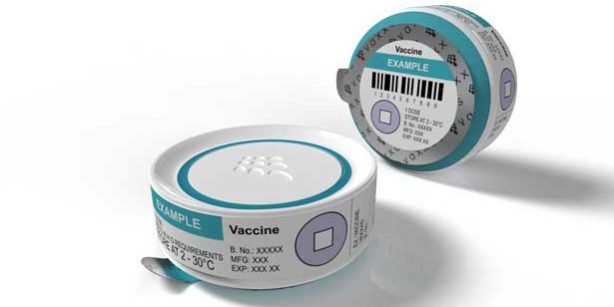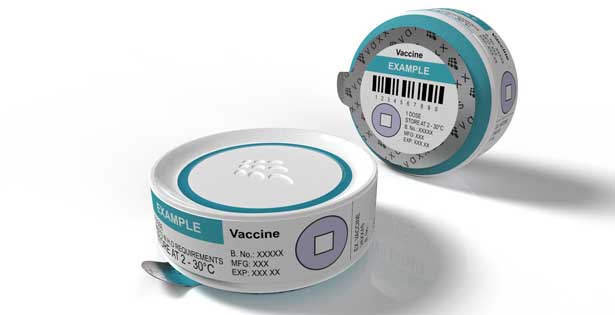Research project to help get new vaccine delivery technology to market
A joint manufacturing research project between Vaxxas, the University of Sydney and the Innovative Manufacturing Cooperative Research Centre (IMCRC) is due to test end-user usability, manufacturability, patient acceptability and supply chain logistics of a new technology that aims to replace traditional needle and syringe for vaccinating people against diseases.
Vaxxas is an Australian based biotechnology company with the primary goal of commercialising an innovative, next generation vaccine delivery platform. Vaxxas’ Micro-projection Array Patch (MAP) technology targets immunological cells below the surface of the skin. The Vaxxas MAP is applied to the skin using a disposable applicator, containing and protecting the product and ensuring repeatable delivery into the skin.
This project focuses on the manufacture and testing of a prototype commercial applicator to de-risk the device design prior to the high capital investment of a pilot scale manufacturing equipment and Australian based pilot scale manufacturing facility.
University of Sydney researchers from the Faculty of Medicine and Health, Professor Rachel Skinner, Cristyn Davies, and Professor Robert Booy, are working with Professor Behnam Fahimnia from the Business School to undertake usability and acceptability studies including an in-clinic assessment and a logistic impact/disruption assessment.
“We are at an important stage of the product development process. However, before investing in manufacturing the applicator at pilot scale, we want to be confident that the device satisfies design, end-user and logistical requirements for its intended markets,” says Charles Ross, Head of Clinical Operations at Vaxxas.
Assessing applicator usability
In 2015 Vaxxas conducted a WHO-funded study testing the usability and end-user acceptability of the Vaxxas applicator for polio vaccination in Benin, Nepal and Vietnam.
Cristyn Davies said the initial study provided valuable information and showed a lot of promise for the new vaccine delivery technology.
“With Vaxxas planning to develop and commercialise the device in Australia, the focus of our research will be how the applicator is perceived by patients and administrators here,” she said.
Professor Rachel Skinner commented that Australia is a mature, developed vaccination market.
“What immunisation providers expect in using the device and its acceptance by immunisation providers and recipients alike may differ dramatically from those in developing countries”, she said.
“We will be testing the application in several settings and across different age groups, in the workplace and at the local GP, said Professor Robert Booy (NCIRS).
The findings will then be compared against the WHO usability study to ascertain different requirements from these different markets.
Assessing patient acceptability
Vaxxas will begin a large Phase I clinical study in 2019. Alongside this, the University of Sydney’s Faculty of Medicine and Health will undertake an acceptability study for Vaxxas which will compare end-user and patient experience with the Vaxxas MAP technology compared to traditional needle and syringe vaccinations.
Assessing applicator logistics
The logistics study will highlight how cost-effective and environmentally sustainable the new supply chain will be compared to the traditional decentralised cold chain.
There is also the opportunity to revolutionise the current vaccine supply chain through addressing the future trends of product serialisation and developing methods for analysing big digital data collected from various supply chain sources. Additional benefits of the Vaxxas product is the potential removal of the 2-8°C cold chain required during distribution and storage of most vaccines.
“This would offer a significant advantage in remote locations and developing countries where refrigeration to keep vaccines viable is a major challenge,” says Prof. Behnam (Ben) Fahimnia who is leading the logistics research project at the University of Sydney.
“Vaxxas has ongoing projects with the World Health Organisation (WHO) and Bill & Melinda Gates Foundation developing products to eradicate diseases from developing countries and the data from this study will be pivotal in the roll out of these projects” said Angus Forster, Chief Development and Operations Officer at Vaxxas.
Proof of concept for manufacturing in Australia
David Chuter, CEO and Managing Director at IMCRC, said that the project is a great example of how research-led innovation in manufacturing drives better products, services and processes.
“Vaxxas is a great example of manufacturing innovation in Australia, with the technology, including both applicator and MAP, having been created and developed here,” said Mr Chuter.
“The research studies will provide Vaxxas with not only important end-user and distribution information that de-risks and accelerates the path to market, but also identify critical product and design parameters required for subsequent pilot scale manufacture in Australia”.

